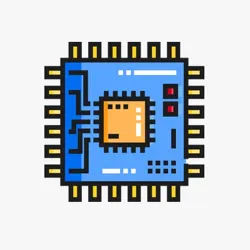
OpenWiFi implemented a WiFi 6 (802.11ax) network card with FPGA, and its driver. Currently only available for subscription, but will be open source in future.

OpenWiFi implemented a WiFi 6 (802.11ax) network card with FPGA, and its driver. Currently only available for subscription, but will be open source in future.
Because not all language and all users requirements is simple.
For example in CJK, we have too many characters (over 97k) to packed in one font. And we have many font style. So when put them together, we need to modify the font fallback list by user so users can make font at the right place to avoid some characters are sans-serif (Heiti), some are serif (Songti/Mingti), some are Kaiti and some are Fangsong. And in CJK, for same characters, it have different glyph in zh-CN, zh-TW, zh-HK, ko and ja. So we need different fallback list for different locale.
In Arabic and Urdu, the situation is worse. They use almost same characters, Arabic alphabet, but use different style: Arabic use Naskh, Urdu use Nastaliq. These two styles are very different if you only learned one it’s hard to read another. So you must specify different font fallback list for different locale.
And it’s not the end. Persian use Persian alphebet which is basically Arabic alphabet but plus 4 new alphabets. Unlike Arabic and Urdu only use one style, they use Nasteliq for poetry and Naskh for others. So just depends on locale is not enough for Persian, users need a way to customize font fallback list per UI elements, like CSS in HTML. Of course, it’s so difficult to implement that only a few application support it. I write here here just to tell you the font fallback is a complex thing and it’s impossible just using a simple per script list.
And the last issue is for all language users: it’s hardcode, so you can’t choose your favorite one. They said it’s TODO to implement configurable default, but there is still no code, and I can’t image the deal time of the configurable fallback list, and of further font fallback mechanism with font replacement features and font OpenType control features and so on. If they choose use wide-used Fontconfig instead of re-invent a square wheel, they can gain all these features with only a few code.


I think that most of usefulness of swap has passed now that we have systems with noodles of ram.
Please read this article authored by maintainer of Linux kernel memory management subsystem and cgroup subsystem, Chris Down.
https://chrisdown.name/2018/01/02/in-defence-of-swap.html
And there is another article with some additional informations about swap authored by @farseerfc@sn.angry.im who tranlated the article above to Chinese.
https://farseerfc.me/followup-about-swap.html (only Chinese version available)


Actually it’s simple than “NAT”, technically. Normally when we said “NAT”, it’s not just NAT (Network Address Translate), but a NAT plus a stateful firewall (see documents below). The conntrack here is a stateful firewall as in “NAT”. And compare to create a map from (paddr, pport) to (iaddr, iport) and match the later, it’s more simple to just match suffix of address.


No. It’s not random. SLAAC uses EUI-64 by default, it generate fixed /64 suffix from MAC. And with suffix match of nftables you can still do device specific income firewall rules. For random privacy address, it’s only used for outcome so just block all other income of IPv6 addresses except EUI-64 is enough.


ESPHome has supported Thread since 2025.6.0b1. But Matter support still need more time.


deleted by creator


I don’t want each client to have a globally unique address as that just allows insane tracking.
Just for this issue, SLAAC has a privacy extension to generate temporary random IPv6 address for outcome traffic. It’s untrackable as well, but in different way to NAT (one device has many addresses instead of many devices have one address).


If I go for SLAAC with privacy extensions and I keep paying for a static IP (v4 & v6) to my ISP then I can’t implement any firewall rules for specific devices as devices will change their IP regularly. And its even worse if I don’t pay for a static IPv6 prefix.
I don’t know which firewall software you used. But if you use nftables, which support suffix match and conntrack for TCP/UDP, you can block all new (identified by conntrack) income (since privacy extension design for outcome) and allow income with specific suffix (for SLAAC with EUI-64, it will stable), needn’t care about which prefix was used.
For example, something like epub is going to be hard because the format is really just a zip file with a specific internal file structure. So, it’s not really the .epub file you want to grep, but one of the files within that zip file you want to grep through.
ePub is a zip file contains a batch of HTML file for contents and some XML files for metadata. So you can extract it and do grep as you do for HTML files.
So when they will change this horrible hardcode font fallback list with “normal” font fallback mechanism like Fontconfig?
https://github.com/pop-os/cosmic-text/blob/main/src/font/fallback/unix.rs


I suppose displayport over thunderbolt plus embedded USB hubs in computer monitors gets close, but the display settings controllers usually require proprietary drivers and are vendor specific.
DisplayPort have DDC to control display settings. But I don’t know how much settings was standardized and implemented by vendor. But at least, the backlight was implement by most vendors, many users use it.


What ever DisplayPort do, HDMI do more badly. HDMI also requires Annual Fee to get document now (since 2021, before that the document was public available). And this is not the worst thing, the worst thing is the HDMI forum disallow anyone open source a driver which support HDMI 2.1 or higher.
https://gitlab.freedesktop.org/drm/amd/-/issues/1417#note_2303163


It’s difficult to have. The members of HDMI Forum are almost the TV manufacturers and the members of VESA (the maintainer of DisplayPort) are PC and GPU munafacturers. So TV almost uses HDMI and monitor almost uses DisplayPort.


The green PCB on left-bottom corner breaks the consistence of design…


It “converts” from and to Ethernet frames, of course. There is not actual L2 difference between PON network and normal fiber ethernet network. In simplified description, it just replace active switch with passive optical splitter.
Yes. Like fiber ethernet, differnet speed need different ONT. But noteworthy, there are some different standards for the same speed level, they are incompatible. For example, EPON and GPON, they are both for 1GbE but incompatible.
There are some code updates to refactor API call two months ago on Codeberg.